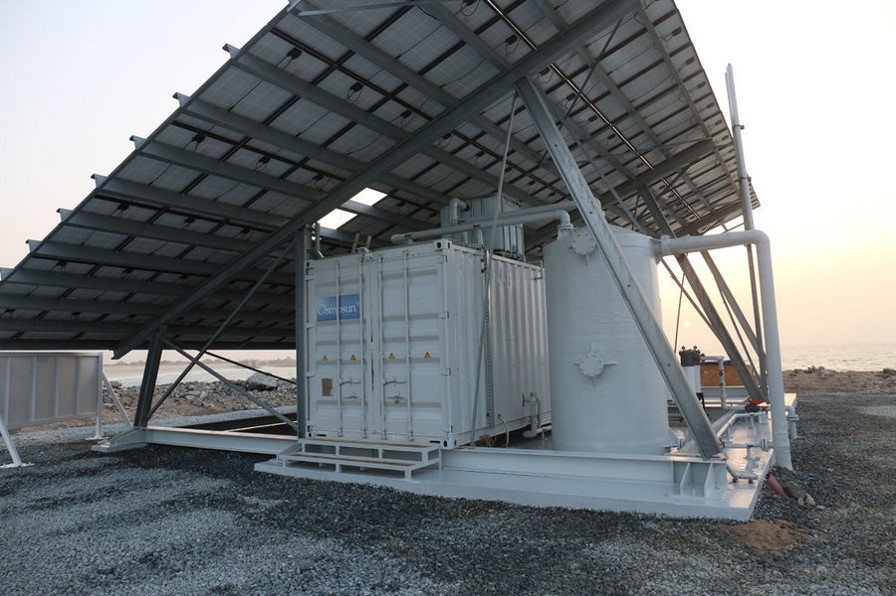7.3.5 Renewable Energy Desalination
 Solar Desalination Plant, Mascara, Doha, UAE
Solar Desalination Plant, Mascara, Doha, UAE
Seawater desalination addresses the challenge of water scarcity and seawater intrusion in coastal areas. Desalination technologies have become more energy-efficient due to energy recovery devices, high permeability membranes and more efficient pumps. Yet, the relatively high energy demand results in increased water production cost and CO2 emissions.
In this context, powering desalination systems by renewable energy sources can be a WEF nexus sound solution. Advantages show especially for islands and remote areas with access to sea or brackish water. The combination of large distance to main grids and existing energy systems based on fossil fuels result in high transportation cost and therefore high energy cost, which in turn imply high water production cost. IRENA (2015) compares various renewable desalination technology options regarding their costs. On a small scale, there is a high market potential for solar-thermal membrane distillation systems and solar-and/or wind-powered reverse osmosis systems for high salinity and electrodialysis for low salinity water resources.
Next solution: Wind Desalination
References
IRENA (2015) Renewable Desalination: Technology Options for Islands. http://www.irena.org/publications/2015/Dec/Renewable-Desalination-Technology-Options-for-Islands
Picture: Renewable Desalination Plant (Photovoltaics – flexible Reverse Osmosis) by Mascara. Doha. Picture available online: https://www.efficycle.fr/mascara-renewable-water-l-energie-solaire-au-service-de-l-acces-a-l-eau-potable/